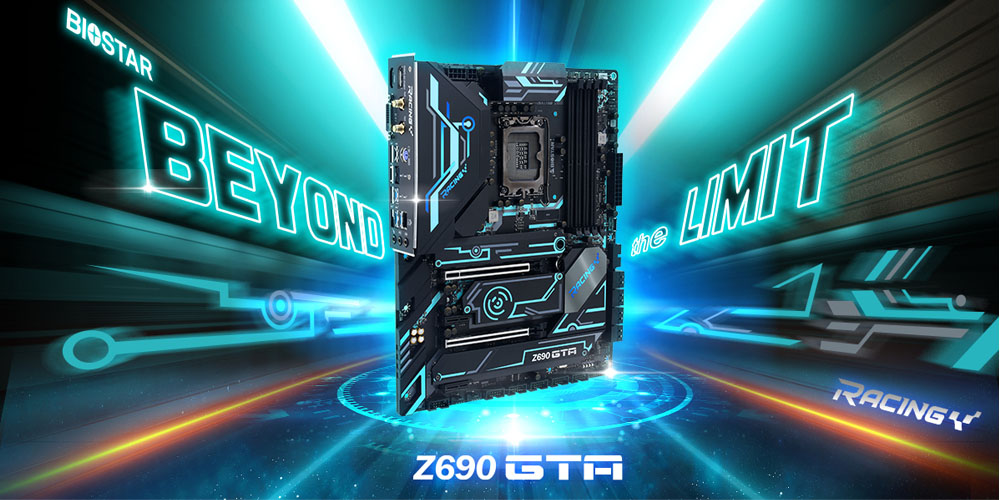November 15th, 2021, Taipei, Taiwan – BIOSTAR, a leading manufacturer of motherboards, graphics cards, and storage devices today, announces the brand-new RACING Z690GTA motherboard.
Enter the battlefield in confidence with BIOSTAR’s renowned RACING series Z690GTA motherboard. Designed based on the Intel Z690 chipset with the latest LGA1700 socket, the new RACING Z690GTA motherboard is the best choice to run the latest Intel 12th gen Alder Lake processors.
Carrying forward the legacy of its predecessors the new RACING Z690GTA motherboard looks and feels otherworldly. Style, power, and grace packed in an exciting new armor design; the motherboard is tastefully designed to make any PC build stand out from the rest.
eaturing a 17phase power design and Active cooling armor gear with fins heat sink, BIOSTAR has actively focused on stable power management and heat dissipation this year, greatly enhancing the performance and durability of its components.
PCIe-5.0 is another big feature added to the motherboard by BIOSTAR, enabling an unrivaled performance boost to any latest AMD and NVIDIA graphic cards.
The new RACING Z690GTA motherboard handles up to 128GB of DDR4 rams across 4 DIMMs capable of supporting up to 5000+ Mhz overclocking numbers.
Efficient storage technology like PCIe M.2 4.0 (64Gb/s) is readily available in all the latest BIOSTAR motherboards, and the RACING Z690GTA is no exception. Featuring ports ranging from PCIe M.2 3.0 (32Gb/s), M.2 4.0 (64Gb/s), and 8 x SATA III (6Gb/s), BIOSTAR enables fast efficient storage for any use.
Packed to the brim, the RACING Z69GTA has a full-fledged REAR I/O panel. A layout of 8 USB ports, with 5 of them being USB 3.2 (Gen2) Ports, 2 x USB 2.0 ports, and 1 USB 3.2 (Gen2) TYPE C Port is available in the RACING Z690GTA motherboard.
The RTL8125B LAN chipset from Realtek powers the network operations of the motherboard, enabling lightning-fast network connectivity for faster online gaming and live streaming experience. 2 WiFi antenna ports with WiFi 6 & 6E capability are also available in the rear I/O panel for a hassle-free, fast internet connection.
Enjoy extraordinary audio and video output with the RACING Z690GTA motherboard. 3 available video output ports consisting of 1x HDMI 2.0 port, 1x DisplayPort, and a single DVI-D port provides an excellent video output capability. Combined with 3x audio ports controlled by an ALC1220 audio chipset that provides 7.1 Channels, High-Definition Audio, users can experience an unprecedented immersive audio-visual experience like no other.
To conclude, the RACING Z690GTA motherboard from BIOSTAR is everything you dreamed of and more. designed with precision engineering and functionality it is perfect for gamers and content creators for all their regular needs with excellent power delivery, heat dissipation, component support, and stylish design.
Read more about BIOSTAR RACING Z690GTA:
https://www.biostar.com.tw/app/en/mb/introduction.php?S_ID=1038





